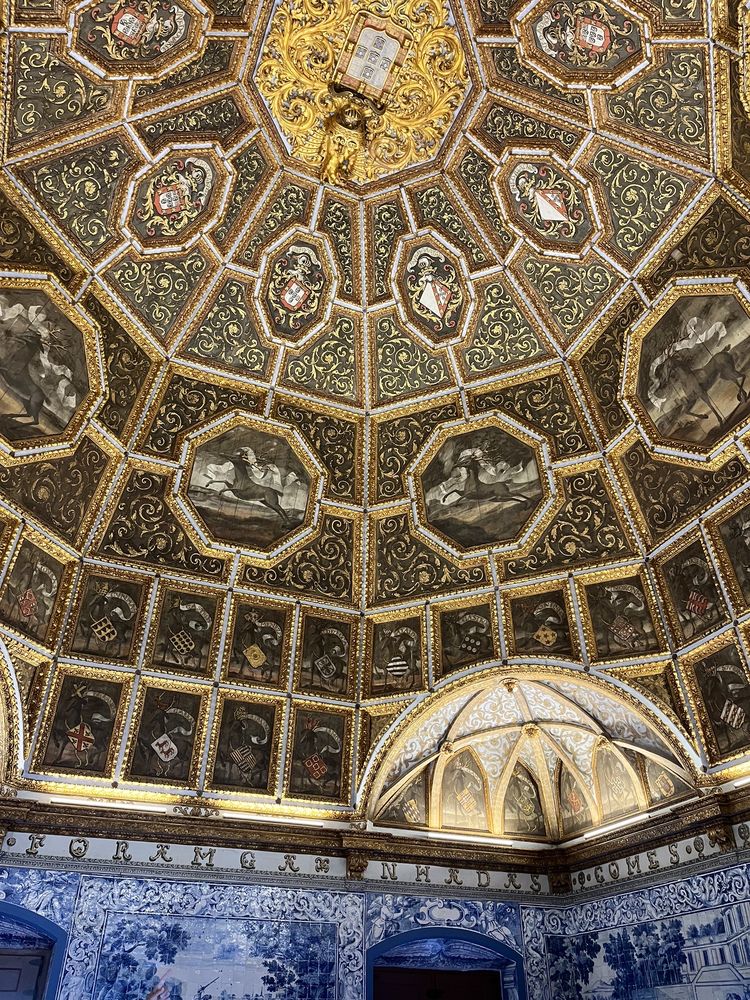Having written a historical fiction novel about Magellan’s voyage, I’m always excited to see a new book about Magellan, and I eagerly opened the newest, Strait: Beyond the Myth of Magellan by Felipe Fernández-Armesto. My excitement didn’t last, although the book does have its strengths. Unfortunately, it comes across as an arrogant and self-important professor’s lecture that rambles from topic to topic lurching towards its final confused conclusion.
The first paragraph of the book gives its thesis: ‘Failure is fatal to happiness but can be fruitful for fame…. Magellan is exceptional because his failure was total. Yet his renown seems impregnable.’ I agree that Magellan was in many senses a failure, yet his discovery of the immense size of the Pacific Ocean and the true circumference greatly aided mankind’s understanding of the world. One might think the first circumnavigation of the globe was significant, but in Fernández-Armesto’s opinion, he felt that, like the first landing on the moon, ‘I feel the same about the first circumnavigation of the world. It did not matter.’ The cynical and nihilistic author lost my respect at this point.
I also do not understand his statement of Magellan’s impregnable renown. Perhaps that is true in Spain and Portugal, but I think most familiar with him realize his strengths and flaws. So, I think the author erected an easy goal to meet.
There is also the question of the author’s writing style and approach. Some may like it. I did not. The forty pages of the first chapter were, I suppose, meant to set the stage for the context of Magellan’s expedition. However, they talked about the plague, ocean currents, weather patterns, Portugal in the Indies, but very little about Magellan. This hapahzard style went on through the book. Once, suddenly, there were some five pages about cannibals, which had a minimal degree of relevance. I felt like the author was trying to demonstrate his expansive knowledge of the era. The effect for me was to simply obfuscate the real story. His chronology of events in the Philippines was particularly confusing.
The greatest value of this book is the author’s extensive use of Spanish and Portuguese sources, many of which are primary sources derived from the survivors of the expedition. Now all serious authors have done this before, but it appears the author’s facility with Portuguese and Spanish aided him in teasing out more information. However, a simple reading of the sources without further analysis presents problems with reconstructing what happened. Those people tied to the mutiny against Magellan in Patagonia, like Elcano, had their self-serving version of events. Some other accounts were written years later through the fog of memory. Hence what happens is that the author often gives you a three-handed account of an event based upon different sources: on the one hand Felipe says this, on the other hand Juan says this, and on the third hand Alfonso says this. But what really happened? It takes logic and analysis to figure it out.
Fernández-Armesto acknowledges Magellan’s single-minded determination, which was similar to that of Columbus, da Gama, Cortes, Pizarro, and the others of that era. I do think he assumes Magellan was treacherous, but doesn’t prove why he thinks so.
A salient event of the expedition was the mutiny in Patagonia. King Charles had appointed several Spaniards as captains and officers of the expedition, none of whom had any experience at sea or the Indies, unlike Magellan and some of his Portuguese cohorts. There was a tension between these two cliques. Some believe that the king or his subordinate Bishop Fonseca had ordered the Spanish officers to depose Magellan once they learned what route he intended to take. The Magellan scholar Medina even says that Magellan received a warning precisely to this effect while provisioning in the Canary Islands. Fernández-Armesto doesn’t mention this. This all sets the stage for the mutiny.
On Palm Sunday in Patagonia Magellan invited the Spanish officers to dinner. Here is Fernández-Armesto’s description of this event: ‘…when Magellan invited the leading men of the fleet to dine after mass. Dinner with the Borgias? Or with Titus Andronicus? Or the Godfather? The summons to a deadly meal has been a topos of art from Absalom and Amnon to Agatha Christie and the Mob. A seat at dinner is a convenient place for an assassination: the victim is pinioned behind the table, disarmed save for unmurderous cutlery, easily approachable to a cutthroat from the rear, and vulnerable to poison in what may be set before him or her.’ This passage encapsulates my problem with the book.
First, the author gives no evidence for Magellan’s treachery other than his own imagination. I doubt Magellan would have killed officers appointed by the king unless he had ironclad evidence, which he didn’t have. And if he did, it would have been revealed by the events that followed. Second, the author’s writing is overwrought. Reading the book is much like listening to a professor droning on and on.
Subsequently, the mutineers did strike that night, mortally wounding one Spanish officer loyal to Magellan and shackling Magellan’s cousin. Later one of Magellan’s loyal officers kills one of the mutineers, which Fernández-Armesto calls an assassination. Assassination??? The mutineers had already stabbed an officer of the fleet and forcibly taken three of the ships! The mutineers initiated the use of force. Magellan was entitled to use whatever means necessary to crush the mutiny. Magellan certainly had his faults, as evidenced in the Philippines, but he seems the more innocent party in the event of the mutiny. It is also telling, I believe, that the sailors and working men of the crew heavily sided with Magellan against the Spanish dandies.
I cannot judge the veracity of the author’s interpretation of the Portuguese and Spanish accounts. I can judge the veracity of more common knowledge, like when Fernández-Armesto calls the historian S.E. Morison a ‘battle-scarred and battle-ready admiral.’ I think Morison’s books are superb. I especially appreciate that he actually sailed through the Strait of Magellan and many of the other locales visited by the explorers that he documents. However, Morison was not ‘battle-scarred and battle-ready.’ He was a college professor who during World War II was given at age fifty-five the commission of Lieutenant Commander in the U.S. Navy so that he might document the history of that war. He never commanded a ship. His eventual promotion to Admiral was more honorary rather than due to any military accomplishment. There are many more instances of wrong or mis-stated facts.
The book could have used a good editor. For example, he establishes early on that Pigafetta didn’t become a Knight of Rhodes (St. John) until after completion of the voyage. Nonetheless, when at Cebu he says things like ‘Pigafetta, the knight of St. John, who might have been expected to know about Christian standards of chivalry, ….’ But by his own admission earlier, Pigafetta was not then a knight of St. John, so why call him one?
The author’s understanding of navigation also appears shaky. Francisco Albo was the navigator of the one ship to make it back to Spain. Albo’s log is our best record of the route taken by the ships. Fernández-Armesto for some reason continually, and annoyingly, questions whether the log was actually Albo’s. Well, Albo was the only pilot to make it back to Spain from the Spice Islands, so one should feel certain the log during that period was truly ‘Albo’s log.’ As to before that, Fernández-Armesto should read Rossfelder’s book on the route and navigation of Magellan’s voyage. While Albo was sailing with other ships, the navigators would periodically get together to agree upon their course and position. Hence his log did at that time represent his measurements, but periodically these would be adjusted so that all navigators would literally be on the same page.
For those interested in Magellan, I recommend Tim Joyner’s book Magellan for a straight forward, lucid explanation of the voyage. I might be prejudiced in this matter because the late Mr. Joyner was my friend. I found it surprising that Fernández-Armesto dismissed Joyner’s book because he ‘lacked the conceptual knowledge, historical sensibility, humanistic discipline, and factual command the task demanded.’ Really? Fernández-Armesto also seems to be unaware of Rossfelder’s book which concentrates on the voyage’s navigation and could have cleared up some of his questions about those issues. Of course, Rossfelder wasn’t a history professor so I suppose his work isn’t relevant in the author’s eyes. He also ignores Bergreen’s 2003 book, Over the Edge of the World: Magellan’s Terrifying Circumnavigation of the Globe, which despite having been out for nearly twenty years is far out selling Strait.







